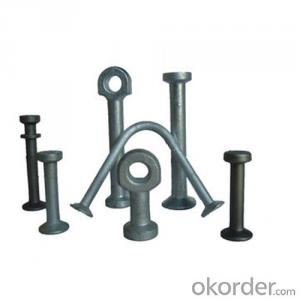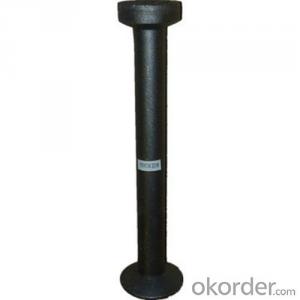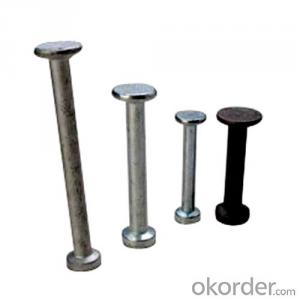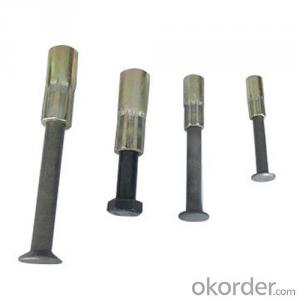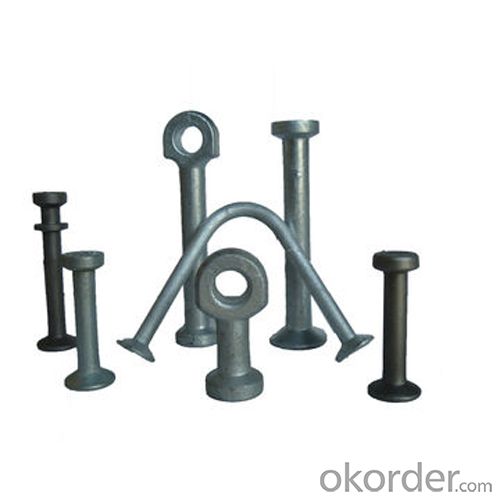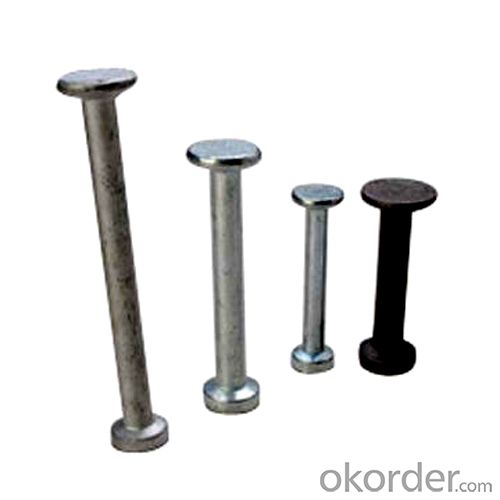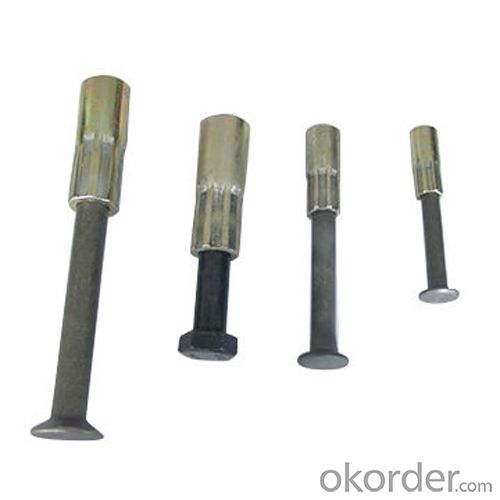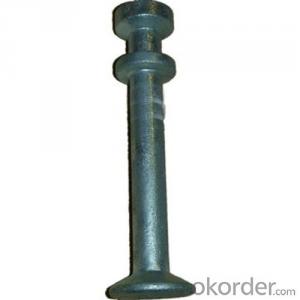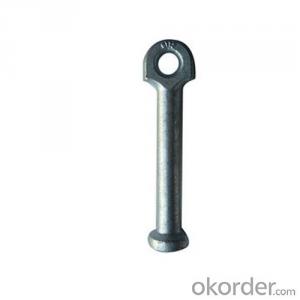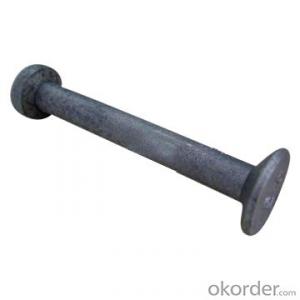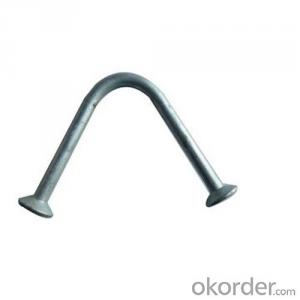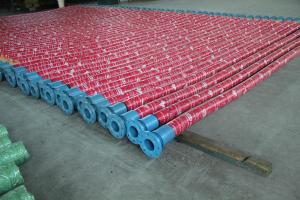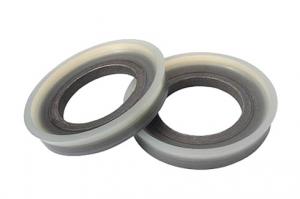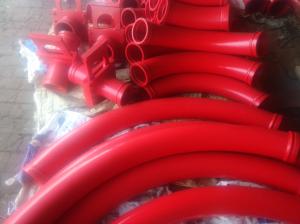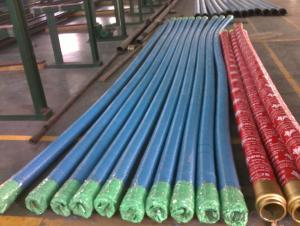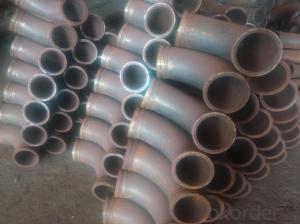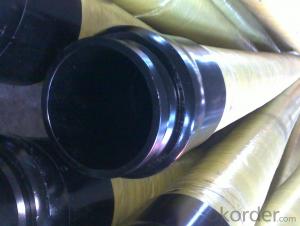Lifting Anchor Forged Straight Type Long Design II
- Loading Port:
- Tianjin
- Payment Terms:
- TT OR LC
- Min Order Qty:
- 100 pc
- Supply Capability:
- 10000 pc/month
OKorder Service Pledge
OKorder Financial Service
You Might Also Like
1. Specification:
Material: Carbon Steel, Forged
Finish: Self Colored, or Galvanized
Packaging: carton, then on pallets, or as customers' requirements
Stocks: we have stocks for regular sizes
Warning: never exceed working load limit
2. Products available:
Swift lift lifting eyes are used with the swift lift anchors to lift, handle and place precast concrete elements
3. Primary competitive advantages:
1. More than 10 years 4 years focus on building material manufacturing
Prompt delivery lead time within 25 days after confirming order
2. Eathu's products are enhanced by the factory QA and quality control checks during the production, if necessary each order can be send out with a certificate referring back to test
3. OEM/ODM capability: more then 10 years experience
4.Packaging and delivery:
Packaging details: goods packed in cartons and then on the pallet
Delivery detail: within 25 days after getting payment
Small Orders Accepted
Brand-name Parts
Country of Origin
Green Product
Guarantee/Warranty
International Approvals
Market:
Asia
Western Europe
Australasia
Central/South America
Eastern Europe
Mid East/Africa
North America
FAQ:
Q1: How long about delivery time Concrete Lifting anchors ?
A1: The delivery time will be very short, normally we keep the raw materials for old customers and sometime we also keep stock products to
make sure delivery time in any emergency cases.
Q2: How do we guarantee the quality of our Concrete lifting anchors?
A2: We have established an advanced quality management system which conducts strict quality tests at every step, from raw materials to the final product. At the same time, we provide extensive follow-up service assurances as required.
Q3: How soon can we receive the product after purchase?
A3: Within three days of placing an order, we will book the vessel for goods. The specific shipping date is dependent upon international and government factors, but is typically 7 to 30 workdays.
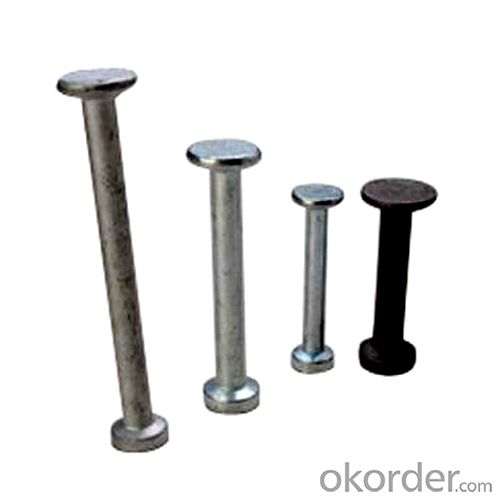
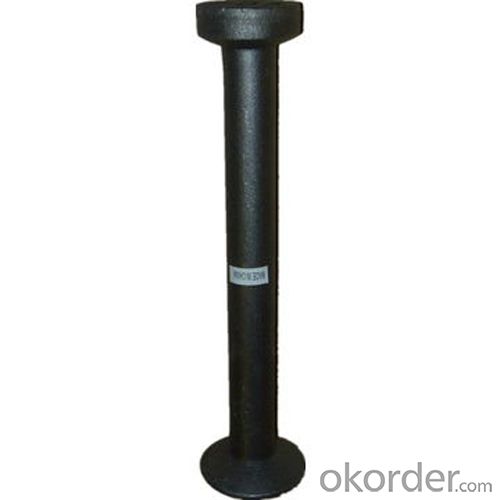
- Q: How can one ensure proper documentation and record-keeping for concrete pump spare parts?
- To guarantee the appropriate documentation and record-keeping for concrete pump spare parts, one can take several measures: 1. Establishing a systematic inventory management system: A well-organized inventory management system should be implemented to track all spare parts effectively. Each part should be assigned unique codes or identification numbers, and a comprehensive inventory list should be maintained. 2. Maintaining accurate records: Detailed records should be created for each spare part, including its description, quantity, purchase date, supplier information, and cost. It is crucial to update this information regularly and make it easily accessible. 3. Implementing a standardized labeling system: Clear and consistent labels should be used on all spare parts to facilitate easy identification and location. This will minimize confusion and prevent misplacement. 4. Storing spare parts in a designated area: A specific storage area should be designated for spare parts, preferably a well-organized warehouse with proper shelving and sufficient space. This ensures secure and convenient storage. 5. Implementing a maintenance and repair schedule: A maintenance and repair schedule should be developed for the concrete pump and its spare parts. Regular inspections of all parts should be conducted, and any repairs or replacements should be documented and reflected in the inventory. 6. Training staff on documentation procedures: Employees responsible for managing spare parts should receive training on proper documentation procedures. This includes accurate recording, labeling, and updating of inventory records. 7. Performing periodic stock checks: Regular stock checks should be carried out to verify the accuracy of inventory records and identify any discrepancies. This helps identify missing or misplaced spare parts and ensures up-to-date documentation. 8. Implementing an integrated software system: An inventory management software system specifically designed for this purpose should be utilized. These systems automate documentation, track stock levels, and generate reports, enhancing efficiency and accuracy. By adhering to these measures, one can ensure proper documentation and record-keeping for concrete pump spare parts, reducing the risk of errors, improving efficiency, and guaranteeing the availability of the right spare parts when needed.
- Q: How can one identify the correct part number for a specific concrete pump spare part?
- To identify the correct part number for a specific concrete pump spare part, there are a few steps you can follow: 1. Check the equipment manual: The first place to look is the manual that came with the concrete pump. It should provide a detailed parts list along with their corresponding part numbers. This is the most reliable and accurate source of information. 2. Contact the manufacturer: If you don't have access to the equipment manual or if it doesn't provide the necessary information, reach out to the manufacturer directly. They should be able to assist you in identifying the correct part number for the specific concrete pump spare part you need. Provide them with as much information as possible, such as the make, model, and serial number of the concrete pump. 3. Use online resources: There are various online platforms and parts catalogs available that provide detailed information about spare parts for different concrete pump brands and models. These resources often allow you to search for the part based on the make and model of your concrete pump. Make sure to cross-reference the information you find with the manufacturer's specifications to ensure accuracy. 4. Consult with a local dealer or distributor: If you are unable to find the correct part number through the above methods, consider reaching out to a local dealer or distributor of concrete pump spare parts. They often have extensive knowledge and experience in identifying and sourcing the right parts for different equipment. Provide them with all the necessary details about your concrete pump, and they should be able to assist you in finding the correct part number. Remember, accuracy is crucial when identifying the correct part number for a specific concrete pump spare part. Using reliable sources and consulting with professionals will help ensure that you obtain the right part for your equipment's needs.
- Q: Can I get spare parts for both concrete pumps with and without boom control systems?
- Spare parts for both concrete pumps, with or without boom control systems, are generally available. Numerous manufacturers and suppliers offer a diverse selection of spare parts to cater to various pump types. Whether your pump has a boom control system or not, reliable suppliers should have the necessary spare parts in stock. To ensure compatibility and check availability for your specific concrete pump model, it is advisable to directly contact the manufacturer or supplier.
- Q: How often should hydraulic accumulator bladders be inspected or replaced in a concrete pump?
- Regular inspections of hydraulic accumulator bladders in a concrete pump are essential to ensure their good condition and proper functioning. Ideally, these inspections should be conducted on a monthly basis. However, the frequency of inspection may vary depending on the specific operating conditions of the concrete pump. During the inspection, it is important to carefully examine the bladders for any signs of wear, damage, or leakage. If any of these issues are detected, immediate replacement of the bladders is recommended. This will prevent further damage to the hydraulic system and maintain the overall efficiency and safety of the concrete pump. In addition to regular inspections, it is crucial to adhere to the manufacturer's guidelines regarding the replacement interval for hydraulic accumulator bladders. The manufacturer usually specifies this interval, taking into account factors such as the type of accumulator and the working conditions of the concrete pump. Ultimately, the objective is to ensure that the hydraulic accumulator bladders are in optimal condition to uphold the performance and reliability of the concrete pump. Therefore, conducting regular inspections and promptly replacing bladders are vital for the safe and efficient operation of the concrete pump.
- Q: What are the different types of concrete pump control system sensors?
- The different types of concrete pump control system sensors include pressure sensors, flow sensors, level sensors, temperature sensors, and proximity sensors.
- Q: What are the advantages of using polyurethane components in concrete pump spare parts?
- There are several advantages of using polyurethane components in concrete pump spare parts. Firstly, polyurethane is highly durable and resistant to wear and tear, ensuring longer lifespan and reduced maintenance costs. Secondly, polyurethane has excellent abrasion resistance, which allows it to withstand the harsh conditions and high pressures involved in concrete pumping. Additionally, polyurethane components offer superior flexibility, allowing for easier installation and reduced risk of breakage. Lastly, polyurethane is known for its chemical resistance, ensuring that the spare parts can withstand exposure to various chemicals and substances commonly found in concrete. Overall, using polyurethane components in concrete pump spare parts provides enhanced durability, flexibility, and resistance to abrasion, making it a preferred choice in the construction industry.
- Q: How do I troubleshoot issues related to concrete pump spare parts control systems?
- To troubleshoot issues related to concrete pump spare parts control systems, you can follow these steps: 1. Start by checking the power supply and connections to ensure there are no loose or damaged wires. 2. Verify that the control system is properly calibrated and programmed according to the manufacturer's instructions. 3. Inspect the control panel for any visible signs of damage, such as burnt components or water ingress. 4. Use a multimeter to test the voltage and continuity of different control system components, such as sensors, switches, and relays. 5. Consult the system's user manual or contact the manufacturer for any specific troubleshooting steps or error code interpretations. 6. If the issue persists, consider contacting a professional technician or the manufacturer's customer support for further assistance.
- Q: Can I get spare parts for concrete pump wear plates and cutting rings?
- Yes, spare parts for concrete pump wear plates and cutting rings are typically available. They can be purchased from various suppliers and manufacturers specializing in construction equipment parts.
- Q: Can concrete pump spare parts be customized with branding or logos?
- Yes, concrete pump spare parts can be customized with branding or logos. Many manufacturers and suppliers offer the option to customize spare parts with branding or logos according to the specific requirements of the customer. This customization can include adding logos, names, or specific branding elements onto the spare parts. It not only enhances the aesthetic appeal of the spare parts but also helps in promoting the brand or company. Customized branding or logos on concrete pump spare parts can also serve as a form of identification and help in distinguishing the parts from others in case of repair or replacement needs.
- Q: Can I get spare parts for concrete pump accessories like remote control systems?
- Certainly, spare parts for concrete pump accessories like remote control systems can be obtained. A variety of spare parts for these products are offered by numerous manufacturers and suppliers of concrete pump accessories. These spare parts encompass various components for remote control systems, including buttons, switches, sensors, batteries, and transmitters. To ensure the availability of spare parts for your particular model of remote control system, it is advisable to directly contact the manufacturer or supplier. They will be equipped to furnish you with the essential information and aid you in procuring the necessary spare parts.
Send your message to us
Lifting Anchor Forged Straight Type Long Design II
- Loading Port:
- Tianjin
- Payment Terms:
- TT OR LC
- Min Order Qty:
- 100 pc
- Supply Capability:
- 10000 pc/month
OKorder Service Pledge
OKorder Financial Service
Similar products
Hot products
Hot Searches
Related keywords
